來自丨CSDN
https://blog.csdn.net/m0_37701381/article/details/81072774
使用步驟
先創建一個線程池的配置,讓Spring Boot加載,用來定義如何創建一個ThreadPoolTaskExecutor,要使用@Configuration和@EnableAsync這兩個注解,表示這是個配置類,并且是線程池的配置類
@Configuration@EnableAsyncpublic class ExecutorConfig {
private static final Logger logger = LoggerFactory.getLogger(ExecutorConfig.class);
@Value(“${async.executor.thread.core_pool_size}”)
private int corePoolSize;
@Value(“${async.executor.thread.max_pool_size}”)
private int maxPoolSize;
@Value(“${async.executor.thread.queue_capacity}”)
private int queueCapacity;
@Value(“${async.executor.thread.name.prefix}”)
private String namePrefix;
@Bean(name = “asyncServiceExecutor”)
public Executor asyncServiceExecutor() {
logger.info(“start asyncServiceExecutor”);
ThreadPoolTaskExecutor executor = new ThreadPoolTaskExecutor();
//配置核心線程數
executor.setCorePoolSize(corePoolSize);
//配置最大線程數
executor.setMaxPoolSize(maxPoolSize);
//配置隊列大小
executor.setQueueCapacity(queueCapacity);
//配置線程池中的線程的名稱前綴
executor.setThreadNamePrefix(namePrefix);
// rejection-policy:當pool已經達到max size的時候,如何處理新任務
// CALLER_RUNS:不在新線程中執行任務,而是有調用者所在的線程來執行
executor.setRejectedExecutionHandler(new ThreadPoolExecutor.CallerRunsPolicy());
//執行初始化
executor.initialize();
return executor;
}
}
@Value是我配置在application.properties,可以參考配置,自由定義
# 異步線程配置# 配置核心線程數
async.executor.thread.core_pool_size = 5
# 配置最大線程數
async.executor.thread.max_pool_size = 5
# 配置隊列大小
async.executor.thread.queue_capacity = 99999
# 配置線程池中的線程的名稱前綴
async.executor.thread.name.prefix = async-service-
創建一個Service接口,是異步線程的接口
public interface AsyncService {
/**
* 執行異步任務
* 可以根據需求,自己加參數擬定,我這里就做個測試演示
*/
void executeAsync();
}
實現類
@Servicepublic class AsyncServiceImpl implements AsyncService {
private static final Logger logger = LoggerFactory.getLogger(AsyncServiceImpl.class);
@Override
@Async(“asyncServiceExecutor”)
public void executeAsync() {
logger.info(“start executeAsync”);
System.out.println(“異步線程要做的事情”);
System.out.println(“可以在這里執行批量插入等耗時的事情”);
logger.info(“end executeAsync”);
}
}
將Service層的服務異步化,在executeAsync()方法上增加注解@Async(“asyncServiceExecutor”),asyncServiceExecutor方法是前面ExecutorConfig.java中的方法名,表明executeAsync方法進入的線程池是asyncServiceExecutor方法創建的。
接下來就是在Controller里或者是哪里通過注解@Autowired注入這個Service
@Autowiredprivate AsyncService asyncService;
@GetMapping(“/async”)
public void async(){
asyncService.executeAsync();
}
用postmain或者其他工具來多次測試請求一下
2018-07-16 2247.655 INFO 10516 --- [async-service-5] c.u.d.e.executor.impl.AsyncServiceImpl : start executeAsync
異步線程要做的事情
可以在這里執行批量插入等耗時的事情
2018-07-16 2247.655 INFO 10516 --- [async-service-5] c.u.d.e.executor.impl.AsyncServiceImpl : end executeAsync
2018-07-16 2247.770 INFO 10516 --- [async-service-1] c.u.d.e.executor.impl.AsyncServiceImpl : start executeAsync
異步線程要做的事情
可以在這里執行批量插入等耗時的事情
2018-07-16 2247.770 INFO 10516 --- [async-service-1] c.u.d.e.executor.impl.AsyncServiceImpl : end executeAsync
2018-07-16 2247.816 INFO 10516 --- [async-service-2] c.u.d.e.executor.impl.AsyncServiceImpl : start executeAsync
異步線程要做的事情
可以在這里執行批量插入等耗時的事情
2018-07-16 2247.816 INFO 10516 --- [async-service-2] c.u.d.e.executor.impl.AsyncServiceImpl : end executeAsync
2018-07-16 2248.833 INFO 10516 --- [async-service-3] c.u.d.e.executor.impl.AsyncServiceImpl : start executeAsync
異步線程要做的事情
可以在這里執行批量插入等耗時的事情
2018-07-16 2248.834 INFO 10516 --- [async-service-3] c.u.d.e.executor.impl.AsyncServiceImpl : end executeAsync
2018-07-16 2248.986 INFO 10516 --- [async-service-4] c.u.d.e.executor.impl.AsyncServiceImpl : start executeAsync
異步線程要做的事情
可以在這里執行批量插入等耗時的事情
2018-07-16 2248.987 INFO 10516 --- [async-service-4] c.u.d.e.executor.impl.AsyncServiceImpl : end executeAsync
通過以上日志可以發現,[async-service-]是有多個線程的,顯然已經在我們配置的線程池中執行了,并且每次請求中,controller的起始和結束日志都是連續打印的,表明每次請求都快速響應了,而耗時的操作都留給線程池中的線程去異步執行;
雖然我們已經用上了線程池,但是還不清楚線程池當時的情況,有多少線程在執行,多少在隊列中等待呢?這里我創建了一個ThreadPoolTaskExecutor的子類,在每次提交線程的時候都會將當前線程池的運行狀況打印出來
import org.slf4j.Logger;
import org.slf4j.LoggerFactory;
import org.springframework.scheduling.concurrent.ThreadPoolTaskExecutor;
import org.springframework.util.concurrent.ListenableFuture;
import java.util.concurrent.Callable;
import java.util.concurrent.Future;
import java.util.concurrent.ThreadPoolExecutor;
/**
* @Author: ChenBin
*/public class VisiableThreadPoolTaskExecutor extends ThreadPoolTaskExecutor {
private static final Logger logger = LoggerFactory.getLogger(VisiableThreadPoolTaskExecutor.class);
private void showThreadPoolInfo(String prefix) {
ThreadPoolExecutor threadPoolExecutor = getThreadPoolExecutor();
if (null == threadPoolExecutor) {
return;
}
logger.info(“{}, {},taskCount [{}], completedTaskCount [{}], activeCount [{}], queueSize [{}]”,
this.getThreadNamePrefix(),
prefix,
threadPoolExecutor.getTaskCount(),
threadPoolExecutor.getCompletedTaskCount(),
threadPoolExecutor.getActiveCount(),
threadPoolExecutor.getQueue().size());
}
@Override
public void execute(Runnable task) {
showThreadPoolInfo(“1. do execute”);
super.execute(task);
}
@Override
public void execute(Runnable task, long startTimeout) {
showThreadPoolInfo(“2. do execute”);
super.execute(task, startTimeout);
}
@Override
public Future《?》 submit(Runnable task) {
showThreadPoolInfo(“1. do submit”);
return super.submit(task);
}
@Override
public 《T》 Future《T》 submit(Callable《T》 task) {
showThreadPoolInfo(“2. do submit”);
return super.submit(task);
}
@Override
public ListenableFuture《?》 submitListenable(Runnable task) {
showThreadPoolInfo(“1. do submitListenable”);
return super.submitListenable(task);
}
@Override
public 《T》 ListenableFuture《T》 submitListenable(Callable《T》 task) {
showThreadPoolInfo(“2. do submitListenable”);
return super.submitListenable(task);
}
}
如上所示,showThreadPoolInfo方法中將任務總數、已完成數、活躍線程數,隊列大小都打印出來了,然后Override了父類的execute、submit等方法,在里面調用showThreadPoolInfo方法,這樣每次有任務被提交到線程池的時候,都會將當前線程池的基本情況打印到日志中;
修改ExecutorConfig.java的asyncServiceExecutor方法,將ThreadPoolTaskExecutor executor = new ThreadPoolTaskExecutor()改為ThreadPoolTaskExecutor executor = new VisiableThreadPoolTaskExecutor()
@Bean(name = “asyncServiceExecutor”)
public Executor asyncServiceExecutor() {
logger.info(“start asyncServiceExecutor”);
//在這里修改
ThreadPoolTaskExecutor executor = new VisiableThreadPoolTaskExecutor();
//配置核心線程數
executor.setCorePoolSize(corePoolSize);
//配置最大線程數
executor.setMaxPoolSize(maxPoolSize);
//配置隊列大小
executor.setQueueCapacity(queueCapacity);
//配置線程池中的線程的名稱前綴
executor.setThreadNamePrefix(namePrefix);
// rejection-policy:當pool已經達到max size的時候,如何處理新任務
// CALLER_RUNS:不在新線程中執行任務,而是有調用者所在的線程來執行
executor.setRejectedExecutionHandler(new ThreadPoolExecutor.CallerRunsPolicy());
//執行初始化
executor.initialize();
return executor;
}
再次啟動該工程測試
2018-07-16 2230.951 INFO 14088 --- [nio-8087-exec-2] u.d.e.e.i.VisiableThreadPoolTaskExecutor : async-service-, 2. do submit,taskCount [0], completedTaskCount [0], activeCount [0], queueSize [0]
2018-07-16 2230.952 INFO 14088 --- [async-service-1] c.u.d.e.executor.impl.AsyncServiceImpl : start executeAsync
異步線程要做的事情
可以在這里執行批量插入等耗時的事情
2018-07-16 2230.953 INFO 14088 --- [async-service-1] c.u.d.e.executor.impl.AsyncServiceImpl : end executeAsync
2018-07-16 2231.351 INFO 14088 --- [nio-8087-exec-3] u.d.e.e.i.VisiableThreadPoolTaskExecutor : async-service-, 2. do submit,taskCount [1], completedTaskCount [1], activeCount [0], queueSize [0]
2018-07-16 2231.353 INFO 14088 --- [async-service-2] c.u.d.e.executor.impl.AsyncServiceImpl : start executeAsync
異步線程要做的事情
可以在這里執行批量插入等耗時的事情
2018-07-16 2231.353 INFO 14088 --- [async-service-2] c.u.d.e.executor.impl.AsyncServiceImpl : end executeAsync
2018-07-16 2231.927 INFO 14088 --- [nio-8087-exec-5] u.d.e.e.i.VisiableThreadPoolTaskExecutor : async-service-, 2. do submit,taskCount [2], completedTaskCount [2], activeCount [0], queueSize [0]
2018-07-16 2231.929 INFO 14088 --- [async-service-3] c.u.d.e.executor.impl.AsyncServiceImpl : start executeAsync
異步線程要做的事情
可以在這里執行批量插入等耗時的事情
2018-07-16 2231.930 INFO 14088 --- [async-service-3] c.u.d.e.executor.impl.AsyncServiceImpl : end executeAsync
2018-07-16 2232.496 INFO 14088 --- [nio-8087-exec-7] u.d.e.e.i.VisiableThreadPoolTaskExecutor : async-service-, 2. do submit,taskCount [3], completedTaskCount [3], activeCount [0], queueSize [0]
2018-07-16 2232.498 INFO 14088 --- [async-service-4] c.u.d.e.executor.impl.AsyncServiceImpl : start executeAsync
異步線程要做的事情
可以在這里執行批量插入等耗時的事情
2018-07-16 2232.499 INFO 14088 --- [async-service-4] c.u.d.e.executor.impl.AsyncServiceImpl : end executeAsync
注意這一行日志:
2018-07-16 2232.496 INFO 14088 --- [nio-8087-exec-7] u.d.e.e.i.VisiableThreadPoolTaskExecutor : async-service-, 2. do submit,taskCount [3], completedTaskCount [3], activeCount [0], queueSize [0]
這說明提交任務到線程池的時候,調用的是submit(Callable task)這個方法,當前已經提交了3個任務,完成了3個,當前有0個線程在處理任務,還剩0個任務在隊列中等待,線程池的基本情況一路了然;
責任編輯:haq
-
spring
+關注
關注
0文章
340瀏覽量
14368 -
線程池
+關注
關注
0文章
57瀏覽量
6869 -
SpringBoot
+關注
關注
0文章
174瀏覽量
189
原文標題:SpringBoot中的線程池,你真的會用么?
文章出處:【微信號:AndroidPush,微信公眾號:Android編程精選】歡迎添加關注!文章轉載請注明出處。
發布評論請先 登錄
相關推薦
socket 多線程編程實現方法
Python中多線程和多進程的區別
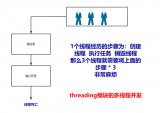
買藥秒送 JADE動態線程池實踐及原理淺析
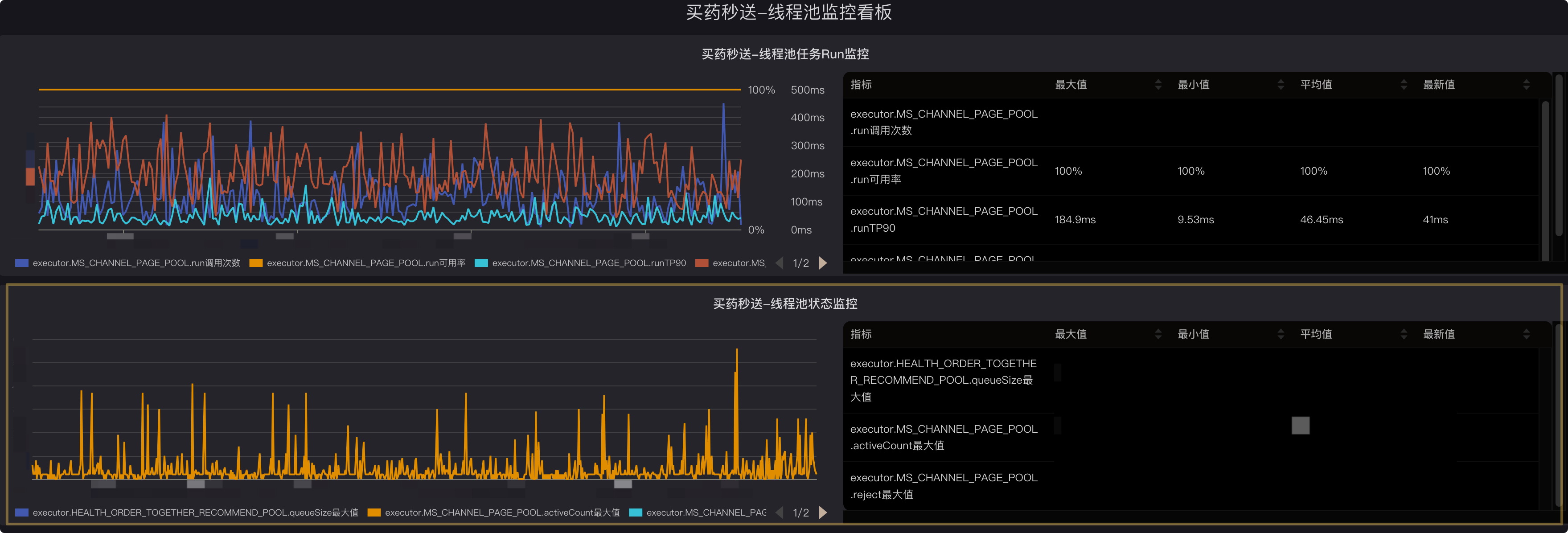
卷積神經網絡中池化層的作用
動態線程池思想學習及實踐
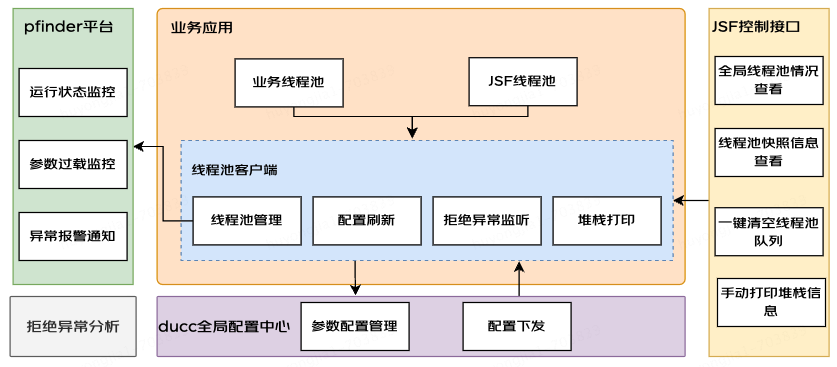
OpenHarmony語言基礎類庫【@ohos.taskpool(啟動任務池)】
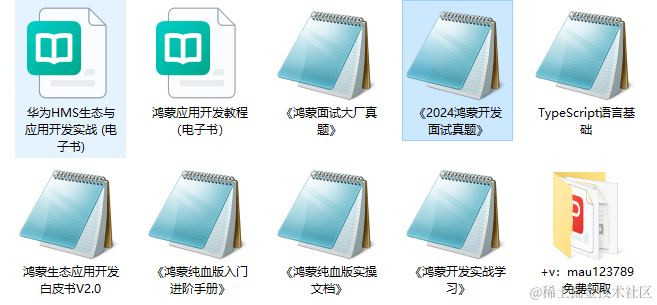
鴻蒙APP開發:【ArkTS類庫多線程】TaskPool和Worker的對比

java實現多線程的幾種方式
基于RTOS的應用進程中的典型線程





 如何正確使用SpringBoot中的線程池
如何正確使用SpringBoot中的線程池
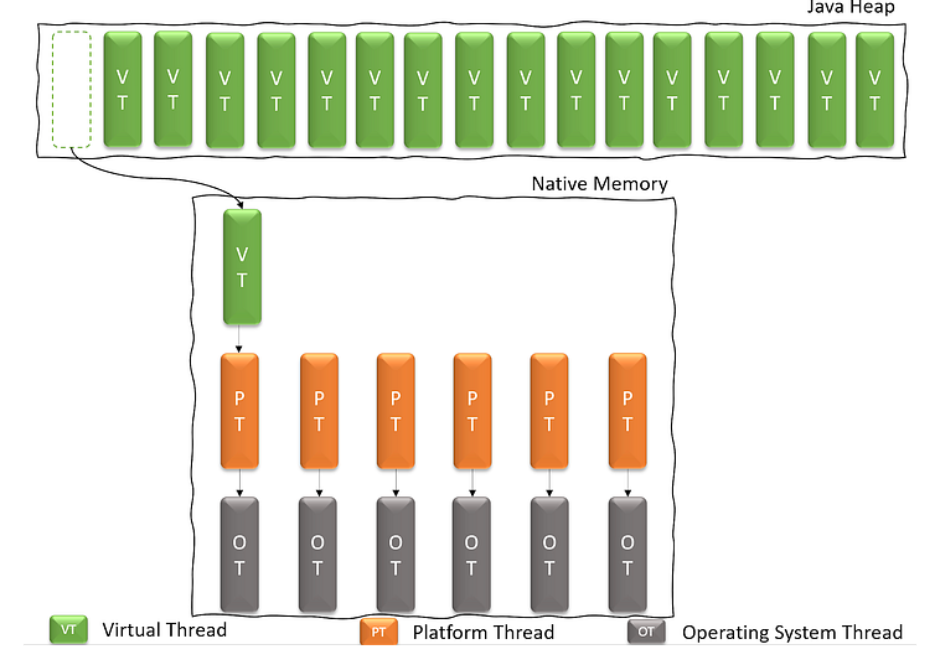
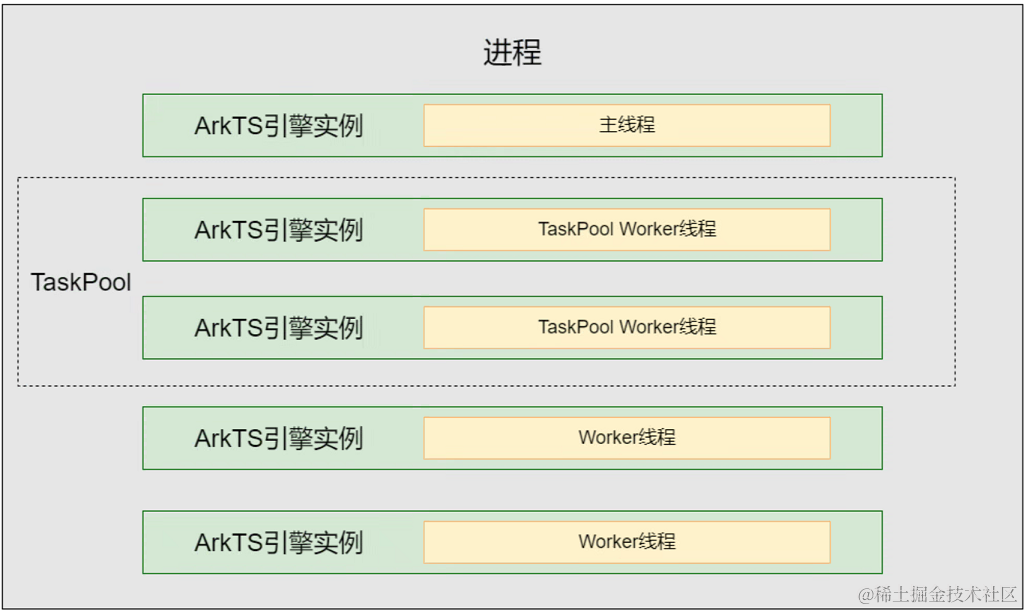











評論